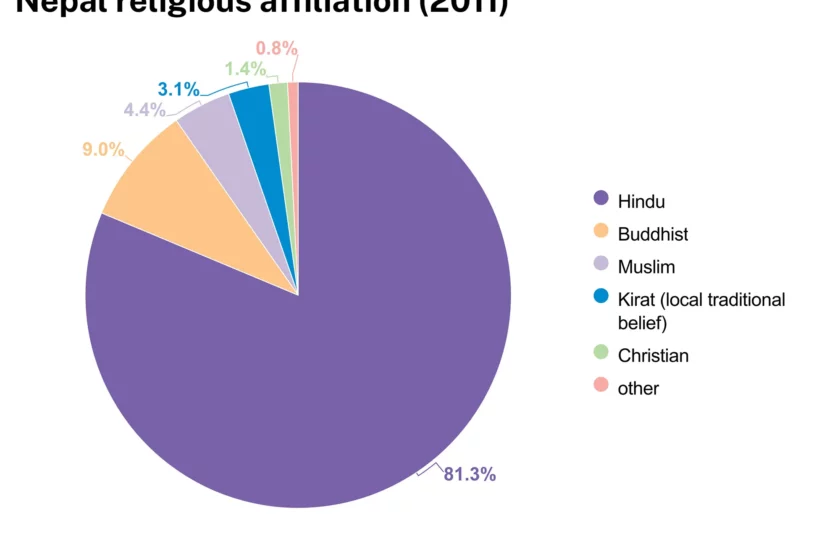Nepal, a truly enchanting country nestled in the breathtaking Himalayas, is home to a rich tapestry of religions that have flourished for centuries. In this article, we will explore the mosaic of faiths found in Nepal, where Hinduism, Buddhism, Islam, Christianity, and other indigenous religions coexist harmoniously.
From the sacred temples and monasteries that adorn its landscapes to the vibrant festivals that celebrate these diverse beliefs, Nepal’s religious heritage is a testament to the profound spiritual devotion and cultural diversity that permeates the nation. Join us as we embark on a fascinating journey to unravel the captivating tapestry of religions in Nepal.
Hinduism
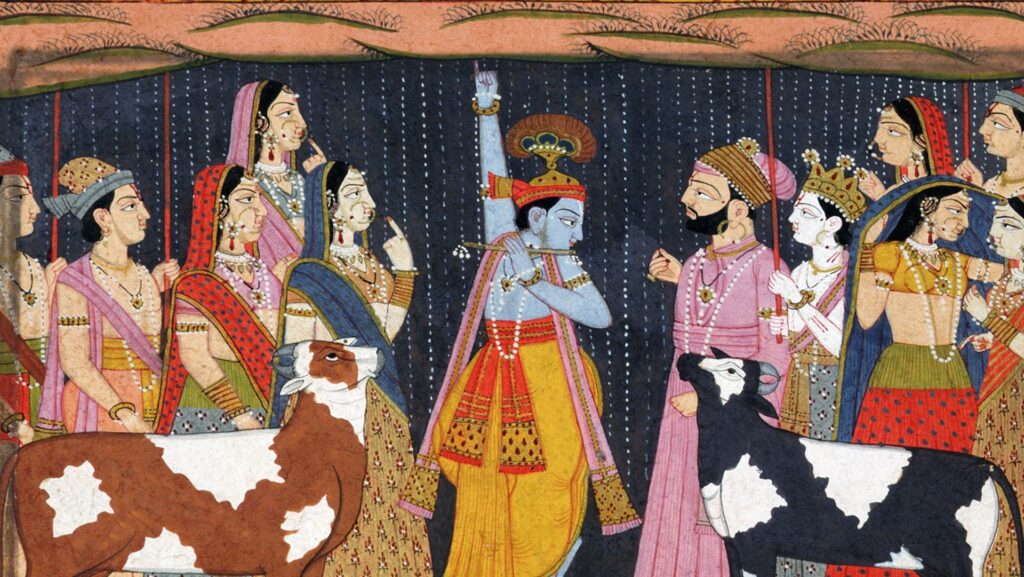
Majority Religion
Hinduism is the majority religion in Nepal, with the majority of the population identifying as Hindus. It is deeply ingrained in the cultural fabric of the country and plays a significant role in the lives of its people. Hinduism is not just a religion but a way of life for many Nepalese.
History
Nepal has a rich history of Hinduism, dating back thousands of years. The country has witnessed the rise and fall of various dynasties, kingdoms, and empires, all of which have influenced the practice and spread of Hinduism. The ancient texts such as the Vedas and the Puranas have served as sources of religious and philosophical guidance for Hindus in Nepal.
Beliefs and Practices
Hinduism encompasses a wide range of beliefs and practices. It recognizes multiple deities, with Lord Shiva, Lord Vishnu, and Goddess Durga being among the most revered. The Hindu caste system also holds a significant place in the society, although efforts have been made to promote equality and social justice in recent times.
Hindus in Nepal often visit temples and shrines to offer prayers and perform rituals. They celebrate various festivals such as Dashain, Tihar, and Holi with great enthusiasm and devotion. These festivals are marked by vibrant rituals, colorful decorations, and traditional performances that bring communities together.
Hindu Festivals
Nepal celebrates a plethora of Hindu festivals throughout the year. One of the most important festivals is Dashain, which lasts for fifteen days and commemorates the victory of Lord Ram over the demon king Ravana. Tihar, also known as the Festival of Lights, is another significant Hindu festival where people worship animals, especially cows and dogs. Holi, the festival of colors, is celebrated with great excitement and marks the arrival of spring.
Buddhism
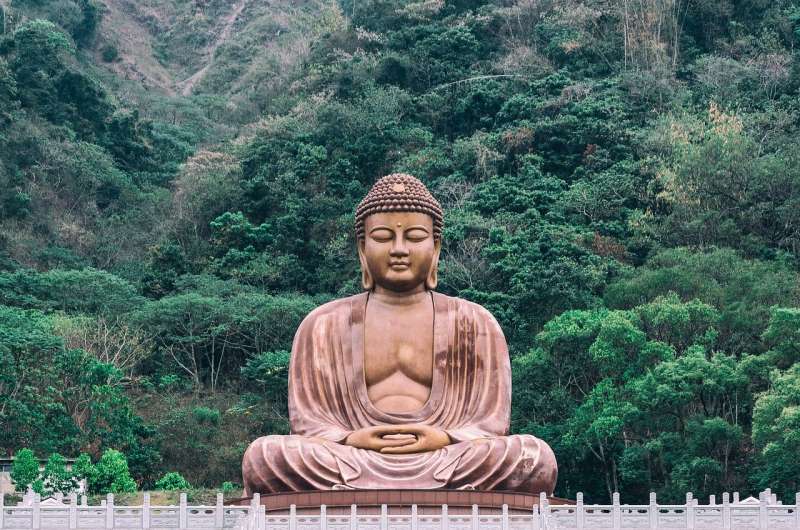
Significant Presence
Buddhism has a significant presence in Nepal, and it is the second-largest religion in the country. Gautam Buddha, the founder of Buddhism, was born in Lumbini, Nepal, which adds great historical and spiritual significance to the country.
History
Buddhism has a long-standing history in Nepal. After the birth of Gautam Buddha, his teachings quickly spread throughout the region, and numerous monasteries were established. Over time, Buddhism has evolved and integrated with local traditions and practices, giving rise to various Buddhist sects and schools of thought.
Beliefs and Practices
Buddhism revolves around the Four Noble Truths and the Eightfold Path, which offer guidance for achieving spiritual enlightenment. Buddhists in Nepal engage in meditation, chanting, and mindfully living their lives in pursuit of inner peace and wisdom. Monks and nuns play a vital role in preserving and propagating Buddhist teachings.
Buddhist Festivals
Buddhism in Nepal is celebrated through various festivals. Buddha Jayanti, also known as Vesak, commemorates the birth, enlightenment, and death of Gautam Buddha. During this festival, devotees gather at Buddhist monasteries and temples to offer prayers, listen to sermons, and participate in peaceful processions. Additionally, the Mani Rimdu festival held at Tengboche Monastery is a grand celebration with colorful dances and cultural performances.
Islam

Religious Minority
Islam is a religious minority in Nepal, representing a smaller but significant portion of the population. The Muslim community in Nepal has its unique cultural practices and religious beliefs, contributing to the diversity of the nation.
History
The history of Islam in Nepal dates back to the medieval period when Muslim traders and merchants from neighboring countries settled in various parts of the country. They established mosques and introduced Islamic teachings, which gradually gained followers and shaped the Islamic community in Nepal.
Beliefs and Practices
Muslims in Nepal adhere to the teachings of the Quran and follow the Five Pillars of Islam, which include Shahada (faith), Salat (prayer), Zakat (charity), Sawm (fasting during Ramadan), and Hajj (pilgrimage to Mecca). Friday prayer gatherings at local mosques play a significant role in creating a sense of community among Muslims in Nepal.
Islamic Festivals
Muslims celebrate several festivals in Nepal, with Eid al-Fitr and Eid al-Adha being the most important. Eid al-Fitr marks the end of Ramadan, the holy month of fasting, and is celebrated with special prayers, feasts, and the exchange of gifts. Eid al-Adha commemorates the willingness of Ibrahim (Abraham) to sacrifice his son, and Muslims offer prayers and perform animal sacrifices as a symbolic ritual.
Christianity
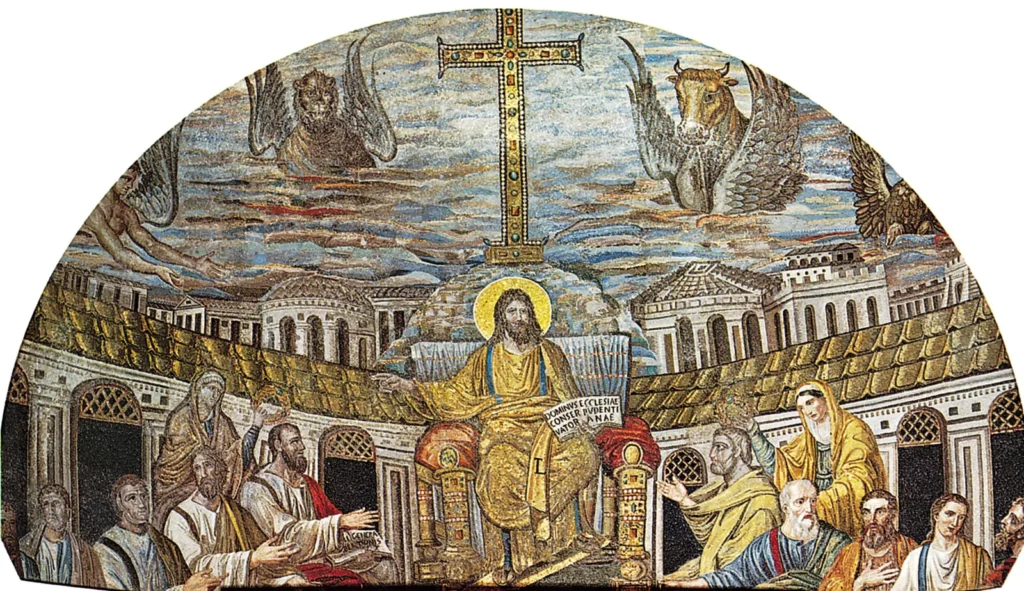
Religious Minority
Christianity is a religious minority in Nepal, practiced by a small fraction of the population. Despite its minority status, Christianity in Nepal has had a lasting impact and plays an important role in the lives of its followers.
History
Christianity began to gain a foothold in Nepal during the mid-20th century through the efforts of missionaries and local converts. Christian organizations and churches were established, contributing to the growth and spread of Christianity in the country.
Beliefs and Practices
Christianity is based on the life and teachings of Jesus Christ, and Christians in Nepal follow the Bible as their holy scripture. They worship in churches, engage in prayer and worship gatherings, and prioritize values such as compassion, forgiveness, and love.
Christian Festivals
Christmas is the most important Christian festival celebrated in Nepal. It commemorates the birth of Jesus Christ and is marked by midnight masses, carol singing, and the joyous exchange of gifts among Christians. Easter, which celebrates the resurrection of Jesus, is also observed with prayers, church services, and the sharing of meals.
Kiratism
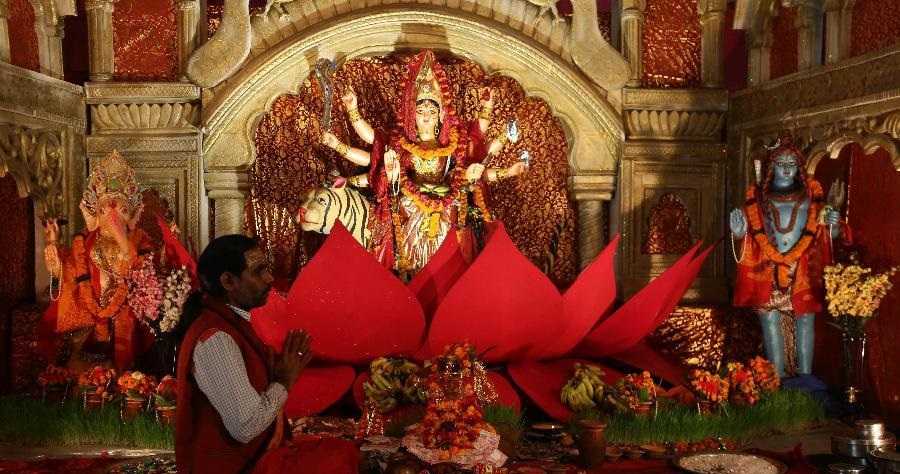
Indigenous Religion
Kiratism is an indigenous religion in Nepal, primarily practiced by the Kirat community. It has deep roots in the ancient beliefs and practices of the country and holds a special place among the ethnic groups that identify with Kiratism.
History
Kiratism predates the arrival of Hinduism and Buddhism in Nepal. It is deeply connected to the cultural and tribal heritage of the Kirat community, who have preserved their unique religious traditions and rituals.
Beliefs and Practices
Kirat people believe in a pantheon of gods and goddesses, each representing various aspects of the natural world. Ancestor worship and the veneration of natural elements, such as mountains and rivers, are crucial aspects of Kirat beliefs. Dance, music, and storytelling are integral to Kirat ceremonies and rituals.
Kirat Festivals
Sakela, also known as Sakewa, is the most significant festival of Kiratism. It is a celebration of the harvest season and involves energetic dance performances, rituals, and offerings to appease the deities. Other festivals such as Ubhauli and Udhauli, which mark the change of seasons, are also celebrated with great joy and enthusiasm by the Kirat community.
Bon

Indigenous Religion
Bon, an ancient shamanistic religion, is practiced by ethnic groups in Nepal such as the Sherpa and Dolpo people. It predates Buddhism and has profound cultural and spiritual significance among these communities.
History
Bon originated from the pre-Buddhist traditions of the Himalayan region, and its roots can be traced back thousands of years. Despite the influences of Hinduism and Buddhism, Bon has remained resilient, preserving its unique practices and beliefs.
Beliefs and Practices
Bon followers believe in various deities, spirits, and ancestral beings who influence the natural world. Shamans, known as Bonpo, play a vital role in performing rituals, connecting with the spirit realm, and healing the community. Chanting, meditation, and ritual dances are integral to Bon practices.
Bon Festivals
Losar, the Tibetan New Year, is one of the most significant Bon festivals celebrated in Nepal. It is marked by elaborate rituals, offerings, and colorful processions. The Cham dance, a traditional masked dance, is performed during Losar and other festive occasions, embodying the spiritual essence of Bon.
Sikhism
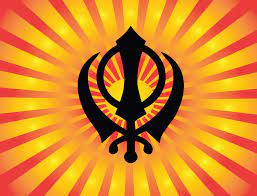
Religious Minority
Sikhism is a religious minority in Nepal, practiced by a small but dedicated community. Sikhs have a distinct identity and contribute to the religious diversity of the country.
History
The establishment of Sikhism in Nepal dates back to the late 19th century, predominantly through the migration of Sikhs from Punjab, India. They settled in different regions, forming cohesive communities and establishing gurdwaras (Sikh temples).
Beliefs and Practices
Sikhs believe in the teachings of Guru Nanak and the subsequent Sikh gurus as recorded in the Guru Granth Sahib. They emphasize the importance of equality, selfless service, and devotion to God. Sikhs in Nepal abide by the principles of the Khalsa, including the five Ks (Kesh, Kangha, Kara, Kachera, and Kirpan).
Sikh Festivals
The Sikh community in Nepal celebrates important festivals such as Guru Nanak Gurpurab, which marks the birth anniversary of Guru Nanak Dev Ji, the founder of Sikhism. Nagar Kirtan, a grand procession, is organized with devotees singing hymns and sharing a communal meal called Langar.
Jainism
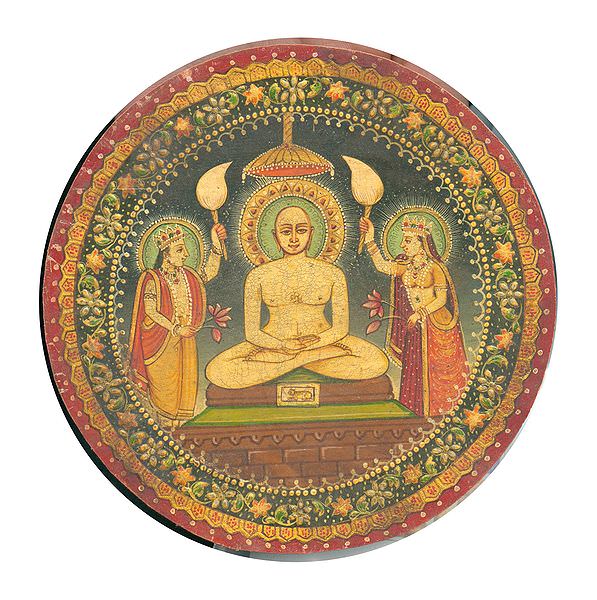
Religious Minority
Jainism is a religious minority in Nepal, followed by a small number of individuals. Jains maintain a unique devotional and ethical path while contributing to the country’s religious and cultural landscape.
History
The presence of Jainism in Nepal dates back to ancient times, but its followers are few in number. Jain traditions have influenced the art and architecture of Nepal, with Jain temples and shrines scattered across the country.
Beliefs and Practices
Jains follow the teachings of Tirthankaras, enlightened beings who have attained liberation through self-discipline and non-violence. They follow a strict code of ethics and emphasize non-violence, truthfulness, and non-possessiveness. Jain monks and nuns, known for their ascetic lifestyle, inspire devotion among their followers.
Jain Festivals
Paryushan, the most important Jain festival, is observed with fasting, meditation, and introspection. Worshippers seek forgiveness for their transgressions and engage in acts of charity. Mahavir Jayanti, commemorating the birth of Lord Mahavir, is also celebrated with reverence and spiritual gatherings.
Baháʼí

Religious Minority
The Baháʼí Faith is a religious minority in Nepal, practiced by a small but growing community. The Baháʼí community promotes the unity of humanity and works towards the betterment of society.
History
The emergence of the Baháʼí Faith in Nepal began in the early 20th century through the efforts of pioneers and individuals who embraced its teachings. The community gradually expanded and established institutions for spiritual gatherings and educational activities.
Beliefs and Practices
Baháʼís believe in the oneness of God, the unity of religions, and the progressive revelation of spiritual truths to humanity. They strive to create a just and peaceful world through acts of service, education, and collaboration. Prayers and devotional gatherings are central to Baháʼí worship.
Baháʼí Festivals
Naw-Rúz, the Baháʼí New Year, is celebrated with joy and spiritual renewal. Devotees come together for prayers, musical performances, and community service. Ridván, a twelve-day festival marking the anniversary of Baháʼu’lláh’s declaration, is a time of reflection, consultation, and commitment to serving humanity.
Animism
Indigenous Beliefs
Animism, although not a specific religion, represents the indigenous beliefs of various ethnic groups in Nepal. It revolves around the spiritual significance of nature, ancestors, and unseen spirits, shaping the religious practices of these communities.
History
The indigenous beliefs and practices in Nepal have been handed down through generations, embodying the close relationship between humans and the natural world. Before the advent of major religions, animistic traditions formed the foundation of spiritual connections and rituals.
Practices and Traditions
Animism is intertwined with the daily lives of communities practicing it. Rituals, offerings, and ceremonies are performed to honor nature, seek blessings from ancestors, and appease spirits. The relationship between humans, animals, and the environment is respected and harmonized through traditional practices.
Animistic Practices
Shamanism and spirit possession are common animistic practices, where individuals communicate with spirits and seek divine guidance. Poignant rituals, such as worshiping sacred trees, rocks, and natural features, reflect the animistic belief in the life force that permeates the natural world.
In conclusion, Nepal is a diverse country with a multitude of religions and belief systems. Hinduism, Buddhism, Islam, Christianity, Kiratism, Bon, Sikhism, Jainism, Baháʼí, and animism all coexist within its borders, shaping the cultural, spiritual, and social fabric of the nation.
Each religion has its unique history, beliefs, practices, and festivals, contributing to the rich tapestry of religious diversity in Nepal. These religions play a vital role in the lives of their respective followers and contribute to the overall harmony and cultural richness of the country.

